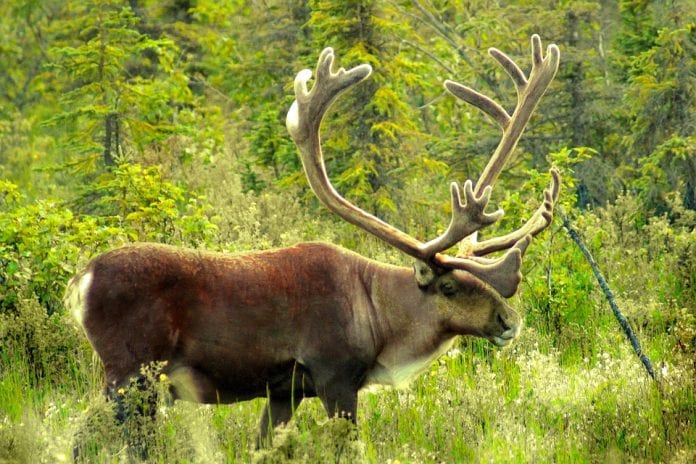Modern technology now offers a speedy alternative to counting Alaska’s largest herds of caribou, in the form of a pair of digital aerial camera systems to replace World War II era black-and-white film cameras used since the 1970s.
The new cameras enabled biologists last summer to pinpoint numbers for the Porcupine, Fortymile, Central Arctic, Teshekpuk and Western Arctic caribou herds, according to Nate Pamperin, a Fairbanks based wildlife biologist with the Alaska Department of Fish and Game.
Without the new system, at least three of those herds wouldn’t have been photographed last summer, Pamperin said.
Biologists in Alaska have traditionally monitored caribou by flying over herds with cameras mounted in small aircraft, taking photographs as the caribou aggregate briefly each summer. The old systems, using Zeiss RMK-A large format film cameras, functioned poorly in low light conditions, covered limited ground swaths, and required pilots to periodically land and reload film.
The new systems feature three medium-format 100-megapixel cameras in gyro-stabilized mounts with GPS and inertial measurement units to record position, pitch, roll and yaw. The technology allows biologists to do photo-census work under low light conditions and capture wider areas of country.
Photo-census counts are important caribou management tools that help biologists track and manage herd population trends. Advisory and regulatory boards, and state and federal wildlife managers all use these findings to help determine bag limits and hunting seasons.
Results of counts of various herds photographed last summer still being processed and those results will soon be available.
The new systems were purchased with funds generated by hunters and shooting sports enthusiasts through payment of federal taxes on firearms, ammunition and archery equipment, and through state hunting license and tag fees.















